Compassion fatigue happens when a professional who has been a caring and engaged carer loses their “ability to nurture,” as Carla Joinson, who coined the term, wrote in 1992. A decline in energy, engagement, and the ability to care for others emerges when a professional has been exposed to so much distress that they become numb to it. Although compassion fatigue is used frequently to refer to burnout, the two are different: burnout results from increased and unboundaried workplace demands (a fact of life for most Academic Leaders right now!), while compassion fatigue emerges when professionals deal with high levels of emotion, grief, and fear.
Academic Leaders and educators are especially vulnerable to compassion fatigue because they’re so empathetic, and because they rely on their empathy, often instinctively, to guide them in decision-making. When compassion fatigue dulls those empathic instincts, Academic Leaders may struggle to listen and communicate effectively, make decisions, and set priorities. There are ways to fight compassion fatigue. And yes, one of those ways is the dreaded “self care” that is so easy to prescribe and so hard to perform. We’re not talking about that. Instead, here are three things you can stop doing that can help to restore your empathic reserves:
Even if you’re dealing with compassion fatigue, your empathy is still one of your greatest strengths. Empathic leaders are also resilient. As you continue to push through difficult times, remember that as you turn your compassion outward to your colleagues, students, and community, you can also focus it inward. Empathy, it turns out, is for everyone–even yourself.
0 Comments
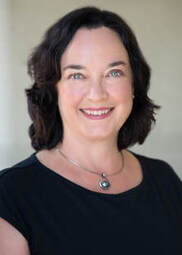 Sarah Hanawald Sarah Hanawald In their new book, The Book of Hope: A Survival Guide for Trying Times, Jane Goodall and co-author Douglas Abrams share their vision for how we can be more resilient when facing difficulty. (Abrams is also the co-author of The Book of Joy, written with the Dalai Lama and Desmond Tutu.) After listening to an interview with Abrams on a local radio station, I knew I had to get a copy. Early in the book, Abrams interviews Goodall and through a series of questions, Goodall describes hope as “a human survival trait” and adds that “without it we perish.” Later, she carefully differentiates between optimism and hope, calling optimism “a disposition” that things will work out for the best. Hope, on the other hand, requires action and agency. Thus optimism can turn to despair when circumstances take a wrong turn, but hope can be sustaining. She is also careful to differentiate between hope and idealism, which she describes as an expectation that what has happened is what was best, even if the individual didn’t want that outcome. Goodall calls that type of idealism tantamount to a delusion. The book outlines four pillars of hope: the power of human intellect, the resilience of nature, the power of youth, and the indomitable human spirit. While I’d love to dive into all of these, I’m going to focus on the second one for this post. According to Goodall, one of the essential tenets of her scientific work with endangered species and habitat destruction is that resilience is “built in” in the natural world. We, along with all living creatures, are meant to be resilient! Further, it is in our nature to foster resilience in those around us. It’s a survival tactic not just of our species, but of all species. How can we harness our instinct for resilience when we are exhausted, discouraged, and seemingly losing ground in the daily struggle? Well, it’s not via “self-care,” although that care may be key to help us find the fortitude we need to engage in the hard work of resilience. In contrast to children, adults have a unique perspective that allows them to draw on the essentials of hope. Adults have a body of experiences that provides them with an understanding that things have not always been the way they are now. Therefore, it is possible that circumstances can and will change again. For adults who care for children, this understanding positions them to guide their communities, including the young people who don’t have access to the reassurance of longitude. And, Goodall argues, hope is the addition of agency to that possibility–the idea that an individual or group can take action in order to improve circumstances that are destructive to well-being. Agency, the feeling that an individual can bring about desired changes in themselves and the world around them, is a psychological factor that many independent school educators know and understand well, from early childhood educators to college counselors. They know that helping children establish agency is key to their success in making sense of the world and their place in it. When external conditions become more uncertain, it is both more difficult and more necessary that an individual feel agency in order to thrive. Goodall recommends that those facing particularly difficult times look for opportunities for agency. I’ll add that this is a key practice for Academic Leaders; not just recognizing when authentic agency has been practiced, but reflecting upon that agency’s positive professional impact. The step of reflecting should not be overlooked! Taking the time to recognize, “I defined and implemented a system that helped several teachers meet deadlines they previously struggled with.” is resilience building, and leaders can draw on that resilience when CDC guidance changes yet again and yet another parent email about masking requirements must be crafted. Academic Leaders can support the same resilience in other campus adults through explicitly recognizing and honoring how an individual’s actions have specifically made a change for the better on campus. When the resilience of the adults at school creates an atmosphere of authentic hope, students benefit as well. Without resilient and hopeful adults in their lives, students struggle. One reason to create a culture in which students also have hope is that hope has an impact on learning. This study found that students who were more hopeful did better academically–surprisingly, hope mattered more than intelligence, personality, or even prior academic achievement. I believe Goodall is right, and resilience and hope are intertwined with agency. Academic Leaders can seize every opportunity to remind the adults and students on campus that even in these challenging times, every individual has agency in an arena. Reflection is a tool that empowers individuals to better understand their own agency and feel the confidence that results. The confidence that leads to resilience and hope that a better future is coming, because we can craft it. 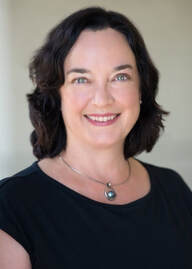 SARAH HANAWALD SARAH HANAWALD In their acclaimed recent book, Leadership Through Mentoring, Phyllis A. Gimbel and Peter Gow explain how critical mentoring is in leadership development for new Academic Leaders. Gimbel and Gow describe the benefits of a structured mentorship program, not only for new leaders, but for their mentors and the entire community. After reading the book, I’m convinced that a structured mentoring program is essential for new leaders! At the same time, I began thinking about another kind of support leaders (new and seasoned) need. Mentoring isn’t quite the right word for a phenomenon I’ve been observing over the past few years, and even more notably during recent times. One phrase I’ve heard repeatedly during the pandemic is, “It’s like starting all over again.” When it’s everyone’s first time navigating an experience, the roles of advice-giver and recipient are a little different. Here at One Schoolhouse, we’ve been seeing the connections Academic Leaders are forming with their colleagues in other independent schools, connections that I’m going to refer to as peership. Peership isn’t a term in wide use in education, but it’s a pretty well-developed concept in other areas. In peership, there’s no hierarchy to the connection. There’s instead a recognition that the most supportive group for an individual might be others going through similar experiences who have similar vantage points. Educators foster this type of bond frequently in our students as we group and regroup them in ways intended to help them grow. Study groups, collaborative learning, clubs, dorms, and teams all provide structures of support. We even use the terms peers or peer groups frequently. Academic Leaders also build structures for support for faculty in school as well. Whether it’s within a department or a grade-level team, or even a PLC, there are often peer networks for teachers on campus. But what about those whose roles on campus mean there’s a limited peer group? That’s more complicated, but no less important, and we’ve been inspired to see Academic Leaders build their peership networks as they support teaching and learning. We’ve watched as you, Academic Leaders, built each other up during previously unimagined challenges. You’ve shared and received resources in our meetups, on the listserv, and in chats during webinars. What you (and we) may not have realized while it was happening is that you are engaging in just the kind of movement that lasts well beyond the immediate need. Last week, Liz and I reminded you that you are highly competent and accomplished professionals, even when you feel like you’re still “just figuring it out.” We are fortunate that our perspective gives us the advantage of seeing across myriad schools and individuals, and it’s important to recognize your efforts in making peership happen. Michelle Friedman, an executive coach who specializes in helping businesses develop cohort structures to support employees going through transitions, believes that the need for peer support should not be overlooked. When employees are facing somewhat distinctive circumstances, they fare better when they realize that they are not alone. Describing one cohort for individuals re-entering the workforce, Friedman said, “The participants feel like they are going from zero to 100 miles per hour. The typical participant has been home-based for 4, 6, 10 years, and then one day she’s on the 7am train to her new job.” She continued, “No one else in her life is going through this except the other people in her cohort. The cohort plays a critical role by providing peer support, a place where vulnerability can be expressed and shared, and a forum for exchanging advice on personal and professional challenges.” As we head into the new year with all the trepidation it deserves, I want to take a moment to thank everyone who has contributed to my peership group and to honor those who have so generously contributed their peership to the Academic Leaders community. You can learn more about mentoring during our webinar this Wednesday, January 19, register or see the recording on our site here. 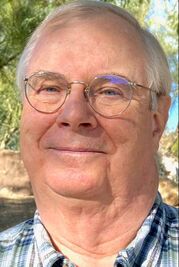 Peter Gow Peter Gow A while ago, before the Solstice and before omicron became the most feared letter in the Greek alphabet, leaving omega in the dust (for now?), I started asking around about the role of school counselors—our in-house mental health professionals—in the actual planning and management of independent school academic programs. My expectations were low, and generally they were met. Especially as the pandemic rages on, most of these folks’ time and energy is predictably consumed by monitoring and supporting the individual victims—students and faculty in acute personal distress—of the “mental health crisis in schools” that we’re experiencing. But I was really wondering about the role of counseling practitioners in looking at and perhaps helping shape the overall learning experiences of all students in a particular school. We’ve known for decades about the “stress culture” in which many students flounder as they strive to meet the expectations put upon them by families, teachers, schools, peers, and themselves. We know that the school experiences of many students from minoritized communities are even more stressful. We even know that sometimes this stress can be fatal. Initiatives like Challenge Success, Making Caring Common, and even specifically “academic/curricular” initiatives like the Mastery Transcript and the Independent Curriculum Group (now a part of One Schoolhouse) cite stress culture and classroom and institutional inequities as part of their raisons d’être. In a handful of schools, it seems, there is a role for the counselor(s) in guiding students’ overall academic environments. Sometimes this is about generalizing from the experience of individuals in crisis to offer feedback to academic leadership on “the state of the school,” mental health-wise; schools with structures that promote this are to be commended. In my delvings I also reached out to a past student, now a therapist-educator and a former modern language teacher, school counselor, and DEIBSJ professional in several independent schools. In some current work that she is doing to develop a vlog-type platform offering practical advice from a “GenX Auntie” persona to Millennials and Gen Zers, my student touched upon something that struck me powerfully: that “critical thinking” is a social-emotional life skill with ubiquitous application and not just a set of functional academic and practical algorithms. In her formulation, critical thinking is essential to the process of making good human decisions. The important critical thinking that we do, and should be doing all the time, lies at the deepest intersections of self-awareness and situational awareness that encompass all things human and humane: “Wait! If I think about this more carefully I might be able to make a kinder decision?” This model ought to be the core of everything we do as educators. We must never lose sight of the fundamental, inevitable linkage between the “critical thinking” skills educators and institutions like to talk about and the emotional and social environments our students will inhabit until they die. I had just never heard anyone make that connection so explicitly before; generally when educators are talking about critical thinking as a “lifelong learning” skill (or better, habit of mind or disposition), the implied focus seems mostly to be on choosing the right person to vote for, the legitimacy of one website over another, or how to create the most effective sales plan for the company. Critical thinking is generally divorced from the perspectives humans must develop or decisions they must make relative to the social-emotional or ethical/moral sides of things, except in political, civic, or practical ways. Critical thinking in its fullest expression is about understanding and parsing our own values and feelings and knowledge in the human situations and contexts in which we find ourselves—in order to be better, kinder, more emotionally generous and curious human beings. Sure, it’s a handy process for interpreting a poem, understanding the causes of a war, doing a proof in geometry, or analyzing a substance in science class, but it’s not just an academic or instrumental tool. It’s at the heart of achieving our potential as Homo sapiens, the hominid critter that has adapted thinking, discerning, and learning in order to sustain its own evolution. (I know that this invites further critical thinking about how that evolution seems to be going in 2022, but that’s another topic.) I am looking forward to my student’s project coming to fruition so that I can help promote it, but for now her efforts have already given me the lasting gift of a new and important insight. (These insights, which have kept on coming from old students, are a big part of why I hang on in the biz.) As educators we need to think, discern, and learn more deeply and broadly about critical thinking as an essential part not just of academic and economic success but of meaningful, purposeful, and generous living. And then we need to embed this into every aspect of our practice. And ask for help, of course, from our schools’ counselors. 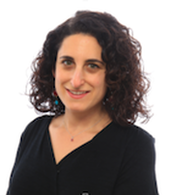 Liz Katz Liz Katz Four weeks ago, when we planned this blog post, the theme was “2022’s word of the year is resilience.” That just seems like a bad joke at this point, because resilience is what you need after the crisis–and we’re back in the middle of crisis again. As hard as this moment is, your school is poised to meet it because of the tremendous work you’ve done over the past twenty months. You began by figuring out how you could deliver your academic program when your teachers and their students were all at home. You built expertise in areas you never thought you’d study: epidemiology, crowd control, air filtration. You made plans, and then remade them, and remade them again. Throughout it all, you were there for your people–for the educators, students, and families in your community. You carried their fear and their anxiety; you celebrated their victories and supported them through challenge. You have done extraordinary things. We are grateful to you, to your strength, intellect, and compassion. You’ve upheld the first promise schools make to families: we will keep your children safe. Beyond that, you’ve done everything you can to help students be well–you have made decisions with both their physical and mental health at the forefront, and you’ve worked to ensure students have the connections with their classmates and their teachers that they need to thrive. And there is a path through this, and that’s because you’ve assembled an array of mighty skills that you’ve practiced and refined. You can review information quickly, weigh options, and act decisively. You can communicate effectively with all of your constituencies. You have learned from the past, and you use that knowledge to inform your present actions and plan for an uncertain future. You can do this. When you look at the decisions in front of you, remind yourself that you’ve already made these choices before in different contexts. When you talk with your community, remind yourself that you have already delivered on the trust and confidence they have in your school. And when you sit alone with yourself late at night–because we know there are a lot of lonely late nights right now–remind yourself that your school is better because of your work. We believe in you. We admire you. We’re here for you. |
Don't miss our weekly blog posts by joining our newsletter mailing list below:AuthorsBrad Rathgeber (he/him/his) Archives
July 2024
Categories |

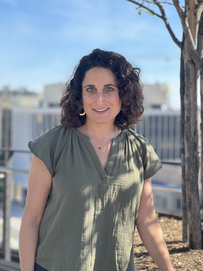
 RSS Feed
RSS Feed